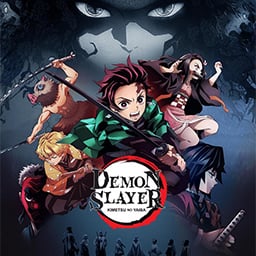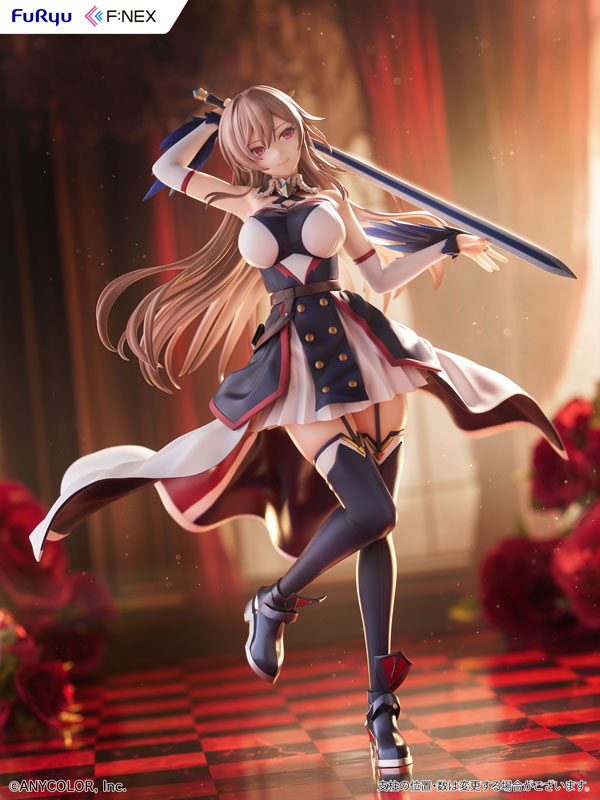Figurine Photography
Good morning. I've noticed that there's some confusion around here regarding cameras, so I decided to write a small, well not that small, guide (actually, it seemed like a good idea ago six hours when I started writing this...)
I use Canon cameras to illustrate because I am more familiar with them, this is not an advertisement or recommendation. The images below are approximately to scale, so you can get an idea of the size difference. I take no responsibility for any mistakes (it's pretty late, lol) and of course I'm open to corrections and suggestions. I can't be bothered to add links, just search for the information you want to explore further. I have tried to give the essentials, but this is by no means exhaustive.
The numbers that count
So what makes a camera good? Manufacturers (and sellers) will throw lots of numbers in your face, but most of them are insignificant. Things like megapixels or maximum ISO aren't important at all. The things that matter, like sensor size and aperture, are often hidden in small letters.
Remember that a camera is a device for capturing light. If there is plenty of light, this mission is easy: there is no need for sophisticated equipment. All cameras perform well on a sunny beach. It's when the light is dim that cheap equipment will struggle (or even fail) to produce anything acceptable.
The most important thing about a camera is the sensor size.
Before digital camera marketers got hold of it, a camera was defined by the size of the film or plate it used. In the digital world, things have not changed, they are only hidden behind an avalanche of marketing. For what ? It's simple, photography is the art of capturing light. The sensor is the rectangle that captures this light; just like a painter's canvas, the bigger it is, the more light it captures and the more you can do with it. The larger the sensor, the less light you need to take a photo, the less noise it will have and the shallower the depth of field will be. This enormously increases creative potential. Unfortunately, the cost of the sensor increases exponentially with its size. Also, the larger the sensor, the larger the lenses should be. This further increases the cost. Ultimately, the cost of a camera is usually determined by the size of its sensor. Cheap cameras must therefore have small sensors.
The next important thing is, of course, the goal. The lens is defined by two characteristics: its aperture (maximum) and its focal length.
The aperture is like the "tap" that controls how much light can actually pass through the lens and reach the sensor. Just like sensor size, the larger it is, the more creative options you have. Unfortunately, as with sensor size, the larger the aperture, the higher the cost of the lens. This is why manufacturers will try to use the smallest aperture possible and try not to inform you of this. The aperture is indicated in f figures. The number is the denominator, so the smaller the number, the larger the aperture, for example f/2 -> wide aperture; f/8 -> small aperture.
Focal length is the "angle of view", the amount of scene you can include in the image. It's expressed in millimeters, but there's a subtlety here: remember that smaller sensors require smaller lenses? A smaller sensor will only see a small central rectangle of the image, so it is in effect like a longer lens. So cameras with smaller sensors use shorter lenses to achieve the same viewing angle. To compare cameras with different sensor sizes, the length is often given as "full frame or 35mm equivalent" - this means that a lens on a full frame sensor should be that length to have the same angle of view. Note that this is what the “crop factor” is for. Simply multiply the actual lens length by the sensor crop factor you want and voilà, you have the equivalent length. Shorter length means wider angle, longer length means narrower angle. Lenses less than 35mm (FF equivalent) are called "wide angle", those over 70mm (FF equivalent) are called "telephoto". Manufacturers will write something like "10x zoom" on the camera. This means that the maximum lens length is 10 times the shortest - note that this doesn't tell you (directly) what these lengths are!
For cheap cameras, there are two other important things to consider. One is optical stabilization. This is a mechanism that moves the sensor to compensate for tremors in your hands. This is an essential feature in low light photography. Don't confuse this with the "electronic stabilization" invented by the marketing department, which is absolutely useless! Only mechanical methods such as "optical stabilization" or "sensor shift" are true stabilizers. Canon calls it "IS", Nikon calls it "VR", Panasonic "OIS", Sony "OSS". The other is a back-illuminated sensor (BSI). No, it has nothing to do with the badum-tish behind the camera. A BSI sensor has larger pixels, allowing it to capture more light. So it acts like a larger sensor, with a corresponding increase in image quality and creative headroom, especially in low light. Canon calls it "HS", Sony calls it "Exmor".
Types of cameras
Cameras can, roughly and simplistically, be divided into four types.
Compact These fit in your pocket and there are about 3 levels: Ultra-compact (entry level)
Sensor size: 1/2.3"; Zoom: up to 5x. Examples: Canon IXUS series These are the smallest and least expensive digital cameras (excluding webcams and the like). They range from poor (no stabilizer, no BSI sensor) to fair (stabilized BSI sensor). The short zoom is sufficient for indoor use, but not outdoors.
Travel zoom compacts (mid-range)
Sensor size: 1/2.3"; Zoom: up to 20x. Examples: Canon SX200 series These have a longer zoom, sufficient for most uses, which is why they are called "long-range cameras travel zoom". They tend to have a stabilizer, otherwise they would be impossible to use at the longest focal length. In this category, having a BSI sensor is even more important because the small flash doesn't have much range, and long zoom usually means a very small aperture at the longest focal length, so it takes everything you can get to improve low light performance. I recommend a camera like this with a BSI sensor as an all-rounder.
Advanced compacts
Sensor size: 1/1.7"; Zoom: up to 5x. Examples: Canon S series, Panasonic LX, Olympus XZ, Samsung EX They offer the best image quality you can get for a device you can carry in your pocket. This is because they have a slightly larger sensor, however the price you pay for this (besides money) is a shorter zoom.
There is also a new type of camera that is a hybrid between an advanced compact and a bridge. They're often called "enthusiast compacts," and the latest generation is excellent but expensive.
Bridges In the mid-2000s, a new type of digital camera appeared, one that fell somewhere between a compact and a DSLR. Everything was halfway between the two: the sensor, the size of the body, the zoom range. Because they bridged the gap, they were called "bridge cameras." Alas, those days are long gone. Manufacturers discovered that if they used the small sensors of the compacts in a bridge body, they would have massive zoom ranges - they were called "superzoom" bridges. People like big numbers, so these things sold like hotcakes. Eventually true bridges have almost disappeared, all modern bridges (except one) are superzooms, which have the same (usually worse) image quality as compacts, but with huge zooms added . There are basically two types of them: Cheap and mediocre.
Sensor size: 1/2.3"; Zoom: up to 26x. Examples: Canon SX500, Fuji S2000, Nikon L, Panasonic FZxx They take the poorest sensor out there and add a big zoom, with a body to impress ignorant customers. The handling is actually nice, but the image quality is quite poor. The build quality is also the cheapest possible. However, these cameras are usually the cheapest ones that offer manual controls ( another reason why the handling is nice), and some of them even have a viewfinder. However, I don't recommend them at all, opt instead for a compact with a good sensor.
Superzoom
Sensor size: 1/2.3"; Zoom: up to 50x. Examples: Canon SX40, SX50, Nikon P510, Sony HX200, Panasonic FZ150 Now these use the small, but good quality, compact sensors high-end and travel zoom cameras. They also have all the manual controls, a viewfinder and of course, that ridiculously long zoom, making them very nice and fun to use. Don't let yourself dazzle, however, because all that glass means their image quality is still lower than the compacts mentioned above. Low light conditions are still very difficult. Notice how these camera bodies look like a DSLR, then look at the top left at how small that sensor is compared to an APS. Don't you think it's a scam?
MILC (Mirrorless Interchangeable Lens Cameras) This is the latest type of product to come out of manufacturers' marketing departments. Since profit margins are sharply reduced in the entry-level DSLR market, they came up with a wonderful idea: let's remove the expensive mirror, viewfinder, focus sensor and even the flash. The resulting body may be smaller, so now we can use that as an excuse to sell it for the same price as a DSLR! Better yet, we can now create a new line of lenses that are essentially the same as the old ones, but slightly shorter, and sell them for even more money! But that's not all, let's remove all the buttons and dials and then say that makes them "easy to use"! Mirrorless cameras are essentially DSLRs stripped of all the good stuff except the good sensor. There are more or less two types: Entry-level MILC
Examples: Sony NEX-3, Olympus EP, Panasonic GF, Samsung NX, Nikon 1 These are essentially the cheapest bodies available. No buttons, everything has to be done in menus, no viewfinder, no built-in flash. If you are patient you can get good results with them, but it won't be a pleasure.
Premium MILC
Examples: Olympus E-M5, Fuji X-Pro1, This makes them some of the best cameras you can get. The manufacturers know this, however, and sell them for ridiculous prices. These cameras are often as expensive as quasi-professional DSLRs.
DSLR (Digital Single Lens Reflex) That's it. What you imagine when you say "camera", the workhorses of the industry. DSLRs offer the highest quality images (except MF cameras, of course) and the greatest optical and creative versatility. The important thing to remember is that it's the lenses that matter, not the camera. All DSLRs take more or less the same photos and give you complete control over everything. Professional models simply focus on faster focusing, faster shooting, more buttons for faster use in the field, and of course, more robust bodies. There are two formats of DSLR: DSLR with APS-C sensor
Examples: Nikon Dxx00, Canon xxxxD, xxxD (Rebels), xxD, 7D, Pentax K- These cameras have a smaller and cheaper APS-C sensor. Therefore, they have a crop factor (not 1), so they are called "APS-C sensor". Entry-level models have simpler AF (autofocus) systems and lack some video options; Nikons don't have a motor focus, so they have to use motorized lenses. The Nikon D7000 has a motor and can take all Nikon lenses since 1959. All Canons take all EOS lenses. For Pentaxes, I don't know, lol.
Full frame DSLR
Examples: Nikon D700, D800, D600, Canon 5D, 6D Finally, the real thing. These cameras use the full-frame format of 35mm film, as designed by Oskar Barnack in 1924, as do all film SLRs. Their huge sensors are very expensive, but produce the best results you can get. The lenses mounted on them also have the viewing angle they are intended to have, which is important because the lengths of these lenses are not random: they have developed over almost a century to become the best, most natural for use in photography. The other very important aspect is the shallow depth of field, which allows you to isolate your subjects even with "small" apertures (cheap lenses). Finally, the photographer's dream.
And the figurines?
Figures are the easiest objects to photograph because: They don't move, so you can use low ISO and long exposure times; They are small, so you can get a nice depth of field even with a small sensor.
All you need is something to hold the camera in place. A tripod is best (even a cheap one will do), otherwise a stack of books should work. Any camera will do, as long as you can get it to focus correctly and take "long enough" exposures (e.g. set the ISO manually to the lowest value possible). The real trick here is the lighting, but that goes beyond the focus of this blog post.
Now, what makes a camera good for miniatures is its ability to get up close (the "macro" ability). This is called the "minimum focusing distance" (MFD), but there's a catch... Manufacturers will specify this at the wide-angle focal length of the zoom. This is of no use to us, what we want is MFD at telephoto focal length, and unfortunately manufacturers don't always give it. Fortunately, most photography websites and magazines give MFD at telephoto focal length in their camera reviews. For compacts, it is often around 1cm/0.4".
Another important thing: MFD is not only the minimum distance you can focus, but also the minimum distance you can focus and fill the frame. Therefore, the larger the MFD, the more difficult it is to get a close-up. The Canon SX200 has an MFD of 0cm/0", so you can focus to infinity with a good camera, you will still be able to get close-ups. So I would say any compact camera which has an MFD of less than 5cm/2" at telephoto focal length is sufficient for photographing figurines.
For bridges and DSLRs, it will depend on the lens. You need to make sure the lens can focus close enough. For example, my 18-55mm lens is marked "0.28 m/0.9 ft" on the barrel, which means the MFD is 28 cm/0.9 ft. To photograph a 5 cm/2 inch figure, I would therefore need a minimum focusing distance of around 14 cm/5.5 inches to get a close-up. I have a 50mm f/1.8 lens that can focus at 45cm/1.5ft, which is perfect for figurines. If you look at lens reviews it is very common for MFD to be given.
That said, I also use low-end cameras. My "everyday" camera is a Canon SX200 which costs less than €200, and it takes perfectly acceptable photos. My "special occasion" camera is a Canon 550D (Rebel T2i), but I use it mainly for video (the zoom is too short for figurine photography).
Conclusion
I guess that sums it up. There are many other things I could talk about, but I'm not going to. Don't hesitate to ask questions, I'm sure someone will be able to answer them.








